Industrial seasoning powder production line
10-09-2025 8
In the food industry, the seasoning powder production line plays a key role in ensuring productivity, consistent quality and food hygiene and safety.
From the stage of selecting raw materials, mixing raw materials, drying, grinding to automatic packaging, the entire process is integrated and strictly controlled through a modern equipment system. Below, Intech Group will help you deploy a standard seasoning powder production process and improve competitiveness in the context of increasing market demand.
What is seasoning powder?
Seasoning powder is a synthetic spice mixed from many ingredients such as salt, monosodium glutamate (MSG), sugar, pepper, garlic, dried onions, and some other flavor enhancers and food additives. Seasoning powder helps replace salt and brings a rich, harmonious flavor, more convenient in the process of preparing dishes. This is a popular spice in the kitchen of every Vietnamese family and is increasingly standardized in industrial production to serve the increasing consumer demand.
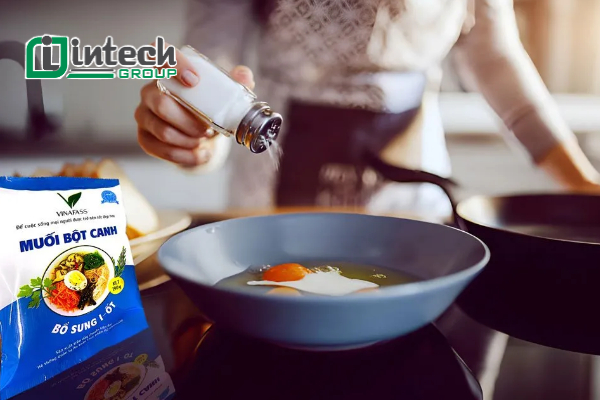
Main ingredients of seasoning powder
Main ingredients of seasoning powder
In the industrial seasoning powder production line, precise control of raw materials is a key factor to ensure stable flavor and quality of output products. The ingredients of standard seasoning powder usually include:
- Refined salt: Is the main ingredient, creating the basic salty taste for the entire product. In the production line, salt is often processed through drying, fine grinding and filtering of impurities before mixing.
- Monosodium glutamate (MSG): Increases the umami taste (sweet aftertaste) of the dish. The quantification and mixing process must be performed accurately using an automatic weighing system to ensure the correct ratio.
- Sugar: Some product lines have added refined sugar to create a balance of salty and sweet flavors. The use of sugar must be strictly controlled to avoid affecting humidity and shelf life.
- Ground pepper: Added in small doses to create a mild spicy taste and characteristic aroma. Modern production lines often have vibrating filters to ensure uniform particle size before mixing.
- Dried garlic, dried onions, chili powder: These ingredients create the attractive aroma and color of the seasoning powder. They need to be processed through the drying process, finely ground and stored under strict humidity control conditions.
- Food additives (chicken powder, bone broth powder, natural flavors): Added to create a deep sweetness and increase the attractiveness of the product. These substances need to comply with food hygiene and safety standards and be accurately mixed through a micro-quantification system.
Note: Some industrial seasoning powder products may contain preservatives or colorants. Therefore, reputable manufacturers often apply closed filtration technology, ensuring clean input materials and controlling additives at an optimal level.
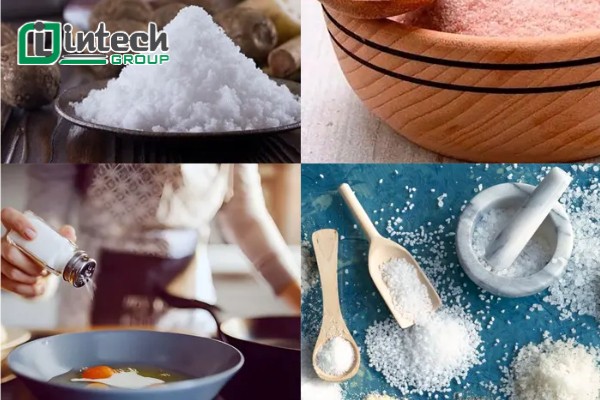
Uses of seasoning powder in daily life
Fermenting powder is not only a convenient mixed spice, but also an indispensable ingredient in the Vietnamese kitchen. Thanks to the harmonious combination of ingredients such as salt, MSG, pepper, garlic, dried onions, etc., seasoning powder brings a full flavor, meeting a variety of food processing needs.
Used to season dishes
Fermenting powder is often used to replace traditional salt in many dishes thanks to its ability to create a richer and more balanced flavor. Some common applications:
- Soup: Helps the broth have a natural flavor, no need to add MSG.
- Fried rice, fried noodles: Creates a delicious, easy-to-eat flavor, suitable for many people's tastes.
- Boiled and steamed dishes: When sprinkling seasoning powder into the broth, vegetables or meat after cooking will be more flavorful and attractive.
Used to marinate food
With rich flavor ingredients such as MSG, pepper and garlic powder, seasoning powder is an ideal choice for marinating meat, fish and seafood before frying, grilling or stir-frying. Seasoning powder helps ingredients absorb spices evenly, retains natural sweetness and creates an attractive surface layer after processing.
Making dipping sauces and dips
In addition to its role as a cooking spice, seasoning powder is also used to mix seafood or fruit dipping salt. Combining seasoning powder with lemon, chili, and green pepper creates a convenient dipping sauce that saves time while still ensuring a rich, delicious taste.
Industrial seasoning powder production process
The current industrial seasoning powder production process is almost completely automated, including 5 main steps: preparing ingredients, mixing ingredients, drying, grinding and packaging.
Step 1: Prepare raw materials
Input materials such as salt, MSG, sugar, pepper, onions, and garlic are carefully selected to ensure cleanliness, safety, and high quality. These materials are fed into the production line through an automatic conveyor system, helping to reduce labor and ensure a stable flow of raw materials.
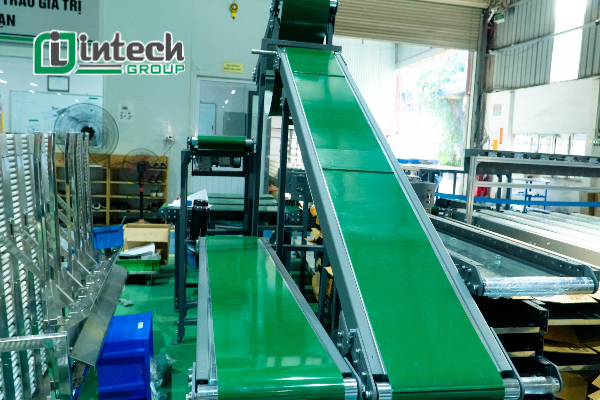
Automatic feeding conveyor in seasoning powder production line
Step 2: Mixing raw materials
The raw materials are fed into the multi-dimensional industrial mixer where the ingredients are mixed according to the preset ratio on the PLC control system. This system helps ensure the uniformity of the mixture, no lumps and preserves the natural flavor of the spices.
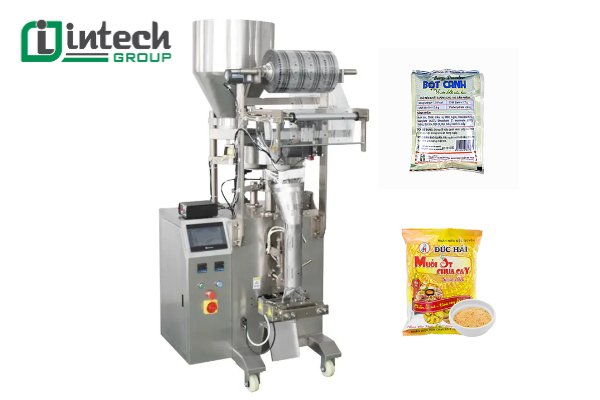
Step 3: Drying
The mixture after mixing is put into a fluidized bed drying system or a continuous conveyor dryer, helping to reduce the humidity to the standard threshold.
The stability of temperature and drying time is automatically monitored, helping to retain the natural aroma of spices, avoid loss of nutrients and ensure long-term preservation.
Step 4: Grinding
When the raw materials are dry, the entire mixture is put into a large-capacity powder grinder to form a uniform fine powder. After grinding, the powder will be carefully screened with a multi-layer vibrating screen to remove coarse particles or impurities, ensuring the finished product has a smooth texture, is easy to dissolve and is uniform.
Step 5: Packing, loading into the warehouse
The finished product is put into the automatic packaging system. The quantitative and vacuum packaging machine helps preserve the seasoning powder in a sealed environment, preventing moisture and microorganisms. The system can integrate inkjet printers with production and expiration dates and robotic box-picking stations, which can speed up processing and minimize human contact with products.
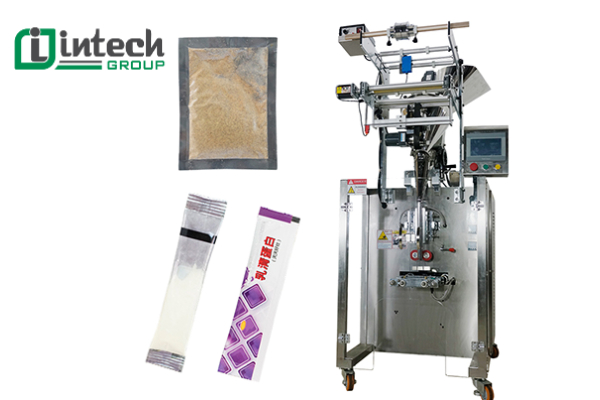
Compare industrial seasoning powder and handmade seasoning powder
Today, along with the development of production technology, modern seasoning powder production lines have helped create convenient products, stable in quality and meet large consumer demand. However, many people are still hesitant between using industrial seasoning powder or homemade seasoning powder to ensure health. Let's compare based on the specific criteria below:
| Criteria | Industrial seasoning powder | Homemade seasoning powder |
| Ingredient | Made from salt, MSG, dry spices, preservatives or artificial flavors may be added depending on the manufacturer. | Use natural ingredients such as salt, pepper, garlic, dried onions... without additives or chemicals. |
| Flavor | Consistent flavor, tightly controlled in the production line to maintain consistency between batches. | Can be flexibly adjusted to personal taste, but stability between processing times is not high. |
| Price | Cheap, mass produced, easily purchased at supermarkets or grocery stores. | Raw material costs and processing time may be higher. |
| Time of use | Thanks to being dried and packaged using modern technology, the shelf life is usually 6-12 months. | Prone to mold if not stored properly, short shelf life. |
| Safety | Depends on the manufacturer. Reputable products ensure food safety standards. However, some may contain synthetic flavorings. | Hand-selected ingredients are safer and do not contain industrial chemicals. |
If you value convenience and long-term use, then industrial seasoning powder produced on modern automatic lines from reputable brands is the right choice. On the contrary, if you prioritize naturalness, craftsmanship and want complete control over the spice ingredients, homemade seasoning powder will be a better solution.
Notes when using seasoning powder
Thanks to the application of modern seasoning powder production lines, today's products are strictly controlled in terms of quality, stable flavor and easier preservation. In addition, consumers also need to understand some important notes during use to ensure long-term health.
1. Do not abuse seasoning powder in daily meals
The main ingredient of seasoning powder is salt combined with MSG (monosodium glutamate) and some other spices. If used excessively, the amount of sodium taken into the body will exceed the safe threshold, increasing the risk of high blood pressure, stroke and cardiovascular diseases. According to the recommendations of the World Health Organization (WHO), each adult should only consume less than 5g of salt/day (equivalent to about 1 teaspoon of salt).
2. Notes when using seasoning powder for young children
Children's digestive systems and kidneys are not fully developed, so it is not suitable to take in too much sodium from seasoning powder or other strong-smelling spices. When preparing food for young children, parents need to reduce the amount of spices to a minimum or use specialized spices specifically for children.
3. Choose reputable products with clear origins
Currently, the market has many types of seasoning powder with diverse designs and prices. Therefore, consumers should choose seasoning powder produced on a closed automated line, with food safety and hygiene certification, clear labels, and avoid buying floating, unbranded products.
Factories that apply modern seasoning powder production lines often have strict inspection processes from input materials, mixing, drying, grinding, to packaging, helping to ensure consistent quality and safety for health.
4. Proper storage
Although produced on an automatic line and packaged in a desiccant package, after opening the lid, the seasoning powder still needs to be carefully stored in a sealed box, in a dry, cool place, away from direct sunlight and high humidity. Improper storage can cause the seasoning powder to clump, deteriorate, affecting the quality and safety of food.
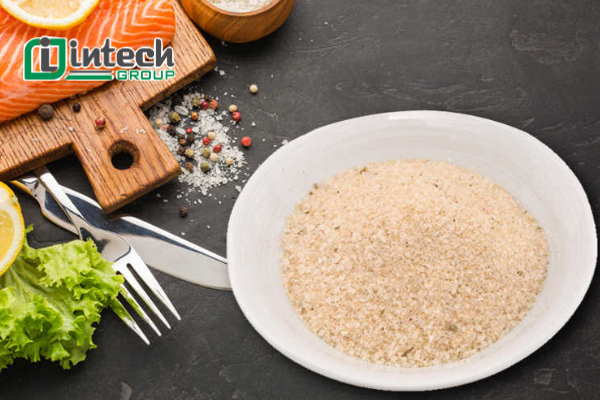
Using seasoning powder properly is an important factor to both preserve the delicious flavor of the dish and ensure the health of the whole family. In addition to choosing reputable products, produced on modern production lines, users need to pay special attention to dosage, preservation methods and users. Businesses wanting to learn about automated production lines for food, beverages, machinery and manufacturing, please contact Intech Group today for advice and support.

